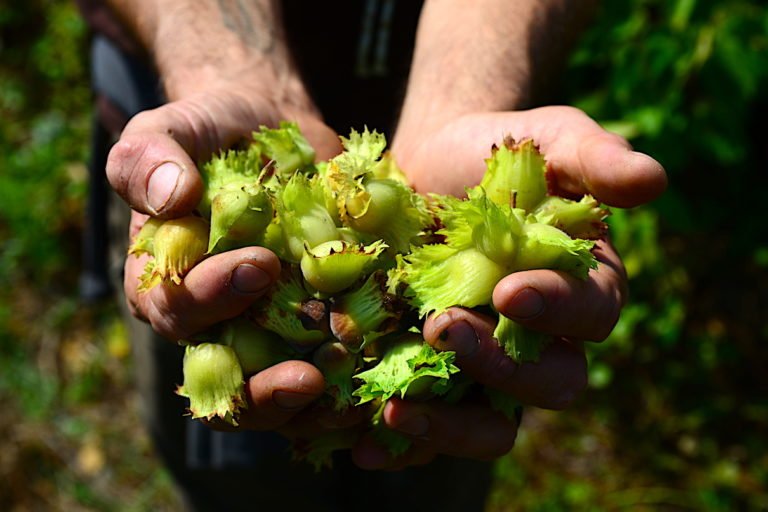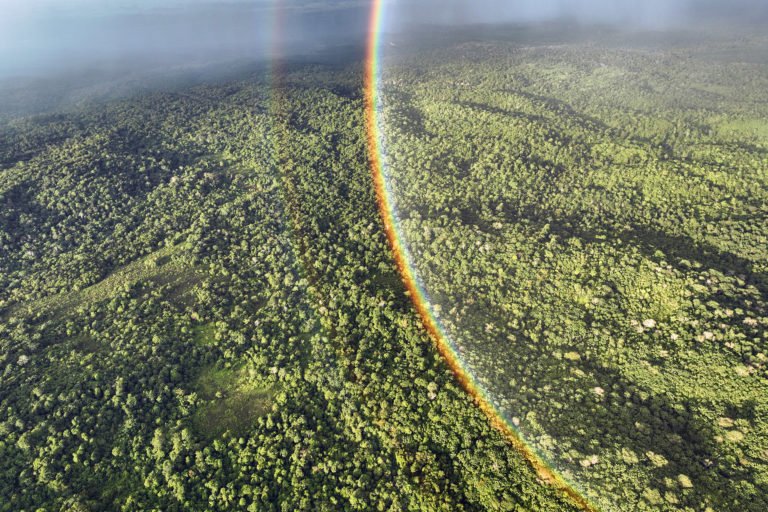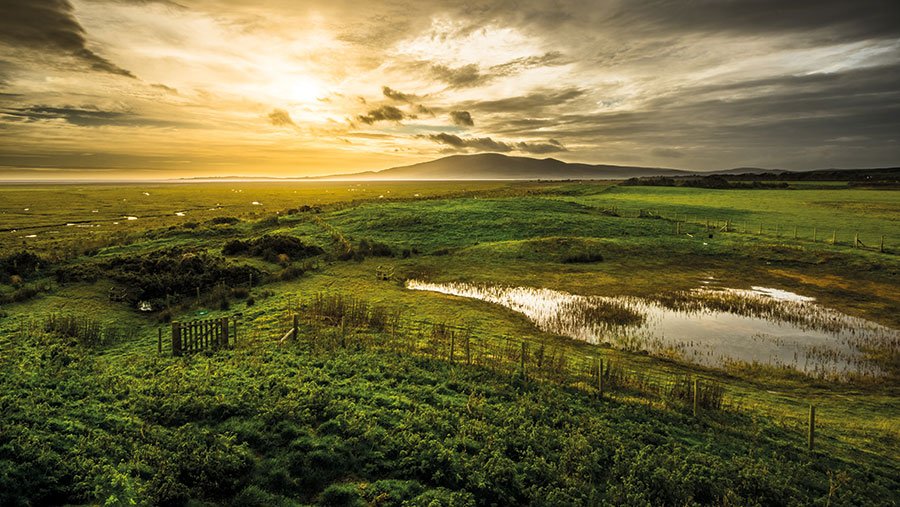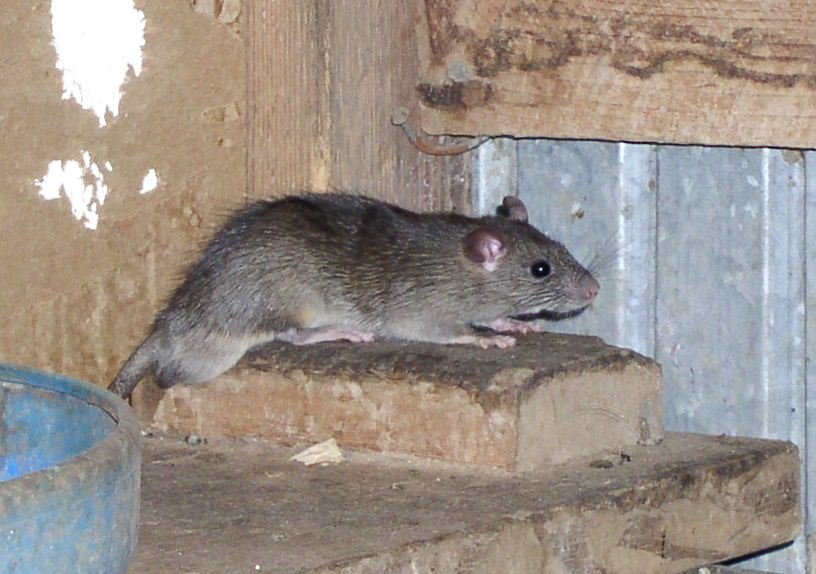- This year, Norway will pay Indonesia $56 million for reducing emissions from deforestation and forest degradation.
- Both countries struck a new climate deal in September, in which Norway will provide support for Indonesia’s bid to curb deforestation and forest degradation, with the aim that Indonesia’s forests will turn into a carbon sink by 2030.
- Norway was supposed to pay the $56 million in 2020 under its previous climate agreement with Indonesia, but the Nordic country failed to pay, resulting in Indonesia terminating the original agreement.
JAKARTA — Norway has agreed to pay Indonesia $56 million in a climate agreement between the two countries, as Indonesia has succeeded in reducing carbon dioxide emissions by preserving its vast tropical rainforests.
The contribution agreement, signed Oct. 19 by both governments, is a follow-up to both countries’ new climate deal, which was struck on Sept. 22.
In the deal, the Nordic country will pay Indonesia, home to the world’s third-largest tropical forests, to keep its forests standing, thereby reducing its emissions.
In 2016-2017, Indonesia was able to reduce 11.2 million tons of carbon dioxide equivalent by curbing deforestation and forest degradation.
And for that, Norway will pay $56 million.
“During 10 working days after today’s signing of the contribution agreement, Norway will deliver its first results-based contribution of $56 million in support of the ongoing implementation of Indonesia’s FOLU Net Sink 2030 Operational Plan,” Indonesian Environment and Forestry Minister Siti Nurbaya Bakar said during the agreement signing ceremony in Jakarta.
This is the same amount of money that Norway agreed to pay back in 2020 under a previous Norway-Indonesia climate deal, which was similar to the current deal and was signed in 2010.
The money was initially expected to be paid in June 2020.
However, Norway had failed to pay the agreed-upon money, as Indonesia said the Nordic country changed the goal posts and made fresh demands.
The Indonesian Ministry of Environment said Norway, after agreeing to pay the $56 million, set additional requirements that had not been established in the agreement, such as requesting Indonesia to show documentation on how the money would be spent.
The ministry said the Norwegian government also sent a due diligence team to assess the Indonesian Environment Fund, or BPDLH, a government agency tasked to manage environment and climate funds from domestic and international sources.
All of this resulted in Indonesia’s unilaterally terminating its previous climate deal with Norway.
On Aug. 5, Norway sent a letter to Indonesia, stating its intention to establish a new climate deal.
This culminated in the signing of the new climate deal in September, which both countries said is built upon lessons learned from the previous agreement.
While the previous deal focused on reducing emissions from deforestation and forest degradation, a mechanism known as REDD+, the new deal encompasses a broader engagement on climate and forest issues in Indonesia.
Under the new agreement, Norway will help Indonesia to achieve its FOLU Net Sink 2030 goal.
The goal is an ambitious bid to transform Indonesia’s forests into a major carbon sink by 2030, absorbing 140 million metric tons more CO2 than they emit into the atmosphere.
“This new partnership is an equal partnership based on our mutual ambition and respect, and we hope that together we can also give a beacon of hope to the rest of the world and a good example of international cooperation leading to the climate summit COP27 that will take place in Egypt [in November],” Rut Krüger Giverin, Ambassador of Norway to Indonesia, said during a press conference after the signing of the contribution agreement.
To support Indonesia’s bid, Norway will provide further payments for a portion of verified emissions reductions for the coming years, she said.
These payments will be based on the existing measurement, reporting and verification (MRV) protocol, a system set up by Indonesia to account for its progress in reducing emissions, to which Norway has also agreed.
The first and subsequent results-based contribution from Norway will be channeled through the Indonesian Environment Fund under Indonesia’s Ministry of Finance.
The contribution agreement encompasses 21 items, among other things, detailing scope and activities, transparency, compliance assurance and dispute resolution, according to Indonesian Environment Fund president director Djoko Hendratto.
“Indonesia has a good governance of financial management adopting international standard, which is regulated comprehensively,” he said. “Therefore, the implementation of the contribution agreement is based on Indonesian laws and regulations.”
Troubling signs
In its statement on the new agreement and results-based payment, Norway acknowledged the positive trend of declining deforestation in Indonesia, which the Nordic country has attributed to a number of forest-protection policies, such as a permanent moratorium on the clearance of primary forest and peatland.
Indonesia has long been among the world’s top emitters of greenhouse gases from deforestation, forest fires and peatland destruction, but its deforestation rate has declined in recent years. According to official data, Indonesia’s deforestation rate in 2019-20 was 115,500 hectares (285,400 acres), an almost 90% drop from 1.09 million hectares (2.69 million acres) in 2014-15, and the lowest since monitoring began in 1990.
A recent analysis by the Forest Declaration Assessment also shows that Indonesia is among the few countries in the world that are on track to meet the 2030 goal of halting deforestation as the rate of primary forest loss in the country has declined over the past five years and was 25% lower in 2021 than in 2020.
The analysis has attributed the decline to action by both corporations and the government to address deforestation from palm oil production.
“Now, Indonesia has become a global leader in reducing deforestation, and thanks to a comprehensive set of policies implemented by the Indonesian government, deforestation is now being reported at a 20-year low,” Giverin said. “This has global significance for our fight against climate change and provides invaluable contribution to conserving biodiversity.”
But environmentalists say Indonesia’s forests are still at risk of being cleared.
Forest Watch Indonesia (FWI) executive director Mufti Fathul Barri said there are troubling signs that indicate the country’s natural forests could face increasing deforestation risk in the future.
He pointed out that the Indonesian government has been rolling out policies in recent years that pose risks to the country’s forests, such as the program to establish large-scale food estates, a bid to 6build a new capital city in the Indonesian part of Borneo, a program to increase the use of palm oil as biodiesel and major infrastructure projects.
And while the Indonesian government has a plan to turn the country’s forest into a carbon sink, the plan still allows for clearing of up to 6.8 million hectares (16.8 million acres) of forests, an area twice the size of Belgium, by 2050.
Deforestation of this magnitude will spell a disaster for the climate and biodiversity, since Indonesia’s rainforests house some of the world’s richest biodiversity, said Iqbal Damanik, a forest campaigner at Greenpeace Indonesia.
“If deforestation is still allowed, then it’ll be difficult to achieve our emission reduction target because new land clearing, including on peatland, will result in a carbon boom,” he told Mongabay. “And it will also impact biodiversity. Forest restoration will take a long time, especially to return the original biodiversity.”
Indonesia still has 90.1 million hectares (222.6 million acres) of natural forests. While most of these forests are protected by the government’s moratorium policy, which bans the clearance of primary forests, there are more than 9.8 million hectares (24.2 million acres) of natural forests in timber plantations, estate crop plantations and agricultural plantations.
By regulation, about 50% of this area does not fall under the protection zone, and thus is allowed to be used for establishing plantations and for development purposes.
“The Indonesian Ministry of Environment and Forestry should save these natural forests inside concessions [from being cleared],” Iqbal said.
For the Indonesia-Norway climate deal to meaningfully contribute to better protection of natural forests in Indonesia, the new agreement should require the Indonesian government to disclose which concessions would protect the natural forests inside them by revoking their licenses, he said.
However, there’s no such call in the new climate deal, Iqbal said.
“One thing the government could do is evaluate permits so that these forested areas could be taken out of concessions,” he said. “But unfortunately, in the [Indonesia-Norway] agreement, there’s no effort to save these remaining natural forests [inside concessions] from deforestation.”
Another thing missing in the climate deal is an explicit call for protection and recognition of rights of Indigenous peoples, who have proven to be the best guardian of forests, Iqbal said.
In the new climate deal, both Indonesia and Norway say they refer to the important role played by local and Indigenous communities as active participants in strategies to protect forests.
But the agreement only says both parties will work together to increase community participation, without further recognition of the rights of Indigenous peoples in managing and protecting their forests.
“Norway usually has concerns for Indigenous peoples, but in the agreement, there’s no call for recognition of Indigenous rights,” Iqbal said. “Participation is a word that’s often used by the government, but what kind of participation [is being pushed in the agreement]?”
For Indigenous peoples to benefit from Norway’s payment, their rights have to be recognized first, he said.
“Indigenous rights should be recognized first before we’re talking about result-based payment,” Iqbal said. “Because if [Norway] paid before Indigenous rights are recognized, it will create new problems. Who own the rights of the forests [that are conserved]? Is it Indigenous peoples or the state?”
Citations:
Overarching forest goals: Theme 1 Assessment. (2022). Retrieved from Forest Declaration Platform website: https://www.forestdeclaration.org/resources/overarching-forest-goals-theme-1-assessment
Overarching forest goals: Theme 1 Assessment. (2022). Retrieved from Forest Declaration Platform website: https://www.forestdeclaration.org/resources/overarching-forest-goals-theme-1-assessment
Banner image: Rainbow over Jambi, Indonesia. Photo credit: Rhett Ayers Butler / Mongabay.
FEEDBACK: Use this form to send a message to the author of this post. If you want to post a public comment, you can do that at the bottom of the page.











